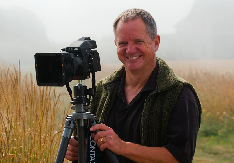 Frank Spear, D.D.S., M.S.D.
Frank Spear, D.D.S., M.S.D.
Dr. Frank Spear is one of the world’s premier educators in aesthetic and restorative dentistry. Founder and director of the Spear Institute for Advanced Dental Education, he currently heads Spear Education, a leading-edge curriculum and faculty that is redefining the quality standards for patient care and the practice of dentistry. Based at the world-class 65,000 square foot Scottsdale Center for Dentistry, Spear Education offers the latest in programs, seminars and hands-on training for dentists from all disciplines.
Dr. Spear, DDS, received his degree from the University of Washington in 1979, and a MSD in periodontal prosthodontics in 1982, also from the University of Washington. Today, Dr. Spear is an Affiliate Professor in the graduate prosthodontics program at the University of Washington and maintains a private practice in Seattle limited to esthetics and fixed prosthodontics.
A gifted communicator and passionate speaker, Dr. Spear has inspired and challenged thousands of dentists to change the way they practice, and by extension to transform their lives and their patients’ lives. As you might imagine, he is constantly on the go. And wherever he goes, Dr. Spear takes pictures.
How did you get started in photography?
My interest in photography dates all the way back to the 1950s, when an aunt and uncle moved to Alaska and left me some darkroom equipment. My cousin and I would mix up chemicals and make contact prints using their old negatives. When we were perhaps 10 or 11 years old, he and I actually sold apples from the neighbor’s tree to make enough money to buy a Brownie camera at Sears so we could take our own pictures.
How did photography turn from sideline to artful passion?
The real turning point in my photographic interest probably occurred when I started taking photography classes in college. I purchased a Nikon 35mm camera and a couple of lenses and carried them with me everywhere.
As part of the classes, we were required to shoot specific assignments, process the film, and ultimately make an 11 x 14 enlargement of our favorite picture from each shoot, which was then displayed and critiqued by the instructor and other students. That was when I realized that a photographic image actually had the power to move people emotionally, not just record an event.
I went on to take cinematography classes in college as well but was totally captivated by still photography and proceeded in my sophomore year to set up a dark room in my parents’ basement – a 30 minute drive from my college dorm. I would routinely visit the darkroom three evenings a week to enlarge photos that I had taken.
As my skills increased, friends started requesting copies of some of my photographs for their walls. During this same period of time I taught myself how to produce color prints direct from negatives and slides utilizing a drum processing system. By the end of my junior year in college the local camera store was having me do custom color enlargements for customers who didn’t want to send their film to Kodak in California.
In addition, I took on two commercial jobs, first for an interior decorator doing before and after photographs of residence interiors she had designed and second, for a contractor who needed pictures for marketing purposes. This was a great experience, because I not only took the pictures but processed and printed them as well. And then I mounted the photographs into portfolios for my clients.
While in dental school I created a dark room in the house I was renting, as well as a small portrait studio. Before I knew it, I was shooting portraits by referral and finally ventured into wedding photography. It was actually this adventure that made me realize my passion in photography was to create images that could be framed and displayed as artwork.
When did you begin to incorporate your photography into your practice environments?
It wasn’t until 1995 when I created a new office in Seattle that I considered having prints made of my photographs for display in my workspace. The designer knew of my history with photography and suggested we use large prints from my photographs to decorate the office. The response from patients, other dentists and visitors was extremely positive.
How did the idea for this website come about?
Two things have happened at the same time. So many people have asked me about the availability of prints that I’ve needed to create an easy outlet for those who might be interested. And the freedom that comes from working digitally both to capture the image and print it without the need for a chemical process has reignited my passion for producing, displaying, and selling large-scale fine art prints.
